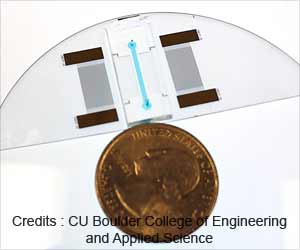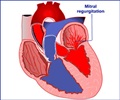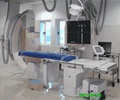A virtual model to study cardiac arrhythmias is being developed based on experimental studies and a mathematical model.
Highlights:
- Cardiac arrhythmias, abnormal heart rhythms, are a common cause of deaths due to cardiac cause
- A detailed understanding of the mechanism of arrhythmias can be useful in dealing with the condition better
- Scientists are developing a model which will assist in studying the process of formation of arrhythmias
The heart contains cardiomyocytes, the main cells of the heart, the fibroblasts which give rise to fibrous tissue, as well as the extracellular matrix, the medium outside the cells. The cardiomyocytes are the excitable cells that can generate an action potential and can contract, resulting in the pumping effect. The fibroblasts are the non-excitable cells that give rise to fibrosis, which could interfere with the electrical conduction. The interaction between the three components is necessary for a good tissue texture, which is altered in the presence of disease and could predispose to arrhythmias.
The scientists conducted experiments on cardiomyocytes and fibroblasts obtained from the rat heart, along with nanofibers to constitute the extracellular matrix. Using the data obtained from their experiments and a mathematical model, the scientists created a virtual model of cardiac cells. They attempted to produce an accurate and realistic model of the cardiac tissue that could be used to study the electrical activity of the heart. The model took into consideration the complexity of the cell shapes and the interactions between the cardiomyocytes and fibroblasts, and allowed the propagation of an electrical stimulus in a similar manner to that produced in the experiment.
Since the model could be used for electrophysiological simulations, it could be useful to understand the process of development of arrhythmias, the various risk factors that cause arrhythmias, and to conduct further research on the condition. The model is still in its initial stages of development, with issues like cell migration and making it 3 dimensional still to be addressed.
Since the model contains fibroblasts, additional improvements of the model may make it possible to study the arrhythmogenicity associated with various types of fibrosis like patchy, diffuse or interstitial fibrosis. The scientists also hope that further improvements to the model would help to study several other conditions affecting the heart besides arrhythmias.
Reference:
- Nina Kudryashova, Valeriya Tsvelaya, Konstantin Agladze & Alexander Panfilov. Virtual cardiac monolayers for electrical wave propagation. Scientific Reports 7, Article number: 7887 (2017) doi:10.1038/s41598-017-07653-3
Source-Medindia



![Pulmonary Arterial Hypertension [PAH] - Symptoms & Signs - Causes - Diagnosis - Treatment Pulmonary Arterial Hypertension [PAH] - Symptoms & Signs - Causes - Diagnosis - Treatment](https://images.medindia.net/patientinfo/120_100/pulmonary-arterial-hypertension-pah.jpg)











